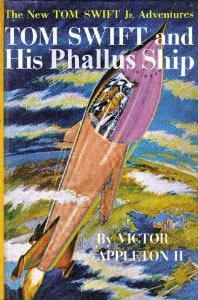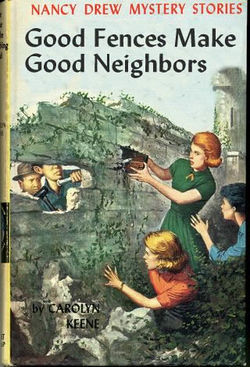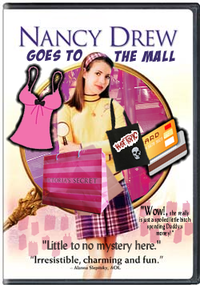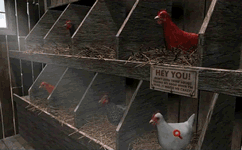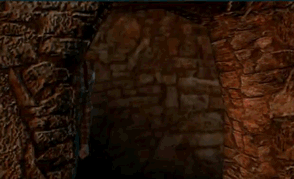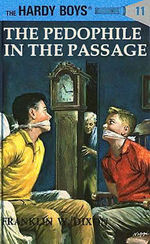Nancy Drew
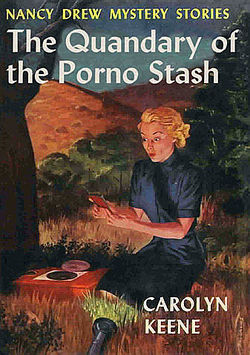
Nancy Drew is the name of a long-running juvenile mystery serial concerning the titular amateur detective, a teenage ingenue who, instead of pursuing either a family or even the far more pedestrian goal of higher education, elects to solve mysteries in her spare time. The character first appeared in 1930 as a curiosity among the “fifty-center” pulp novels, owing in large part to its entertainingly implausible concept.
Despite the impossibility of its premise, millions of copies of Nancy Drew books have been sold, printed in a handful of languages, to be cherished by young girls worldwide, and then to be discarded or relegated to the closet like any other silly little plaything. Such accomplished women as Sonia Sotomayor and First Lady Laura Bush have nevertheless been known to cite Nancy as the inspiration for their modest success. Over the many decades of its run, the Nancy Drew Mystery Series and its lead character have underwent many changes to suit the vacillating proclivities of the American woman.
The novels therefore, with their easily understandable subject matter and elementary syntax, have often proven fertile ground for budding young females to cut their teeth in the world of literary criticism. Some of the most famous feminist literary critics, for example, have been known to spend their entire academic careers attempting to dissect the series.
Authorship And Publication
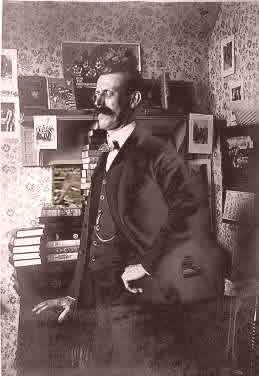
A Digression Into The Trials and Travails of Edward Stratemeyer
In 1906, famed New Jersey dimebook author and notorious hack, Edward Stratemeyer, came to be the host of a novel idea. Years earlier, in the penultimate years of the latter half of the 19th Century, Stratemeyer was nothing more than a destitute penman down on his luck and plagued by his patent inability to write, in the fashion of his peers, compelling, sophisticated works of literature. It was only upon being subcontracted by the legendary dime-novel writer Pilfred Gatten to write length-restricted plot synopses for his column in the popular Highweigh & Miller periodical "Good News, Everyone!" that he hit his brachygraphical stride. Heretofore, the penniless Stratemeyer had been attempting to compose, as was the fashion in the upper echelons of academia those days, heady, intelligent fiction for consumption by literary and social sophisticates. With this new position, Stratemeyer realized that he stood a much better chance were he to aim his sights just a chance lower. Much lower, in fact.
Edward Stratemeyer became a children's book author.
This occupational change of course proved to be a natural fit for Stratemeyer, whose syntactical style, far from being traditionally prosaic, read rather more identically to that of the famous poet-paedophile William Blake, father of the contemporary "nursery rhyme". Stratemeyer wasted little time getting to work, tarrying only at short intervals to pursue his other love, the gustatory evaluation of patent medicines. But in reality, Stratemeyer sat down at his desk and diligently began the arduous task of committing to paper the spectrum entire of his mind's creative labours. In no time at all, he had composed a diverse and fantastical cast of characters for his new line of juvenile fiction, characters who, by some chance coincidence, all happened to be precocious and independent children, usually siblings, who by chance, and chance alone, were regularly permitted, either by negligence or circumstance, to become involved in unsupervised misadventure.
Not a soul was interested. Then Stratemeyer, frustrated, in meeting with potential publishing houses chose instead to go by the name "Arthur M. Winfield" and everything changed. The first five volumes of his lead hitter The Rover Boys sold hundreds of thousands of copies virtually overnight. After spending the turn of the century attempting to find a publisher who might reliably carry the manuscripts, however, Stratemeyer tossed in the wicking cloth, as it were, and set about the creation of a "book packaging" firm all his own. He soon realized that not only it incumbent upon a book packager to place sheets of paper in a box, but also that one was almost universally expected to print actual words on those sheets of paper, attach them to a sturdy spine, glue covers on to them, check for errant plot-obscuring blotches of ink, and distribute them widely about the country.
The Stratemeyer Syndicate
Stratemeyer soon realized his approach would have to change radically. He could no longer wrack his memory of boyhood fancies to draw from them the plots of his notoriously short books. He could no longer use distortedly large typefaces and outstretched margins to give his customers the illusion of value. Most importantly, he could no longer rely on the handful of female relatives he employed to accomplish all of the other labour involved in being a very much literal publishing "house". They had other duties to attend to, as it stood, and so Stratemeyer was forced to hire some employees. In any case, Stratemeyer was tiring of actually writing each and every novel himself, so he devised the cunning plan mentioned earlier. According to the armchair historians who today frequent online encyclopediae:
| “ | Stratemeyer pioneered the technique of producing long-running, consistent series of books using a team of freelance writers to write standardized books, which were published under a pen name owned by his company. | ” |
The long and short of the whole tedious matter was that Stratemeyer, like Henry Ford after him, now wished to do as little work as possible for as much profit as possible, creating an intellectual assembly line to complement the physical one comprised of typists, editors, bookbinders, stenographers, and all around war widows and old maids that he had been known to retain in his exploitative employ. A similar, but much more intimate corps de 'escrit, primarily made up of a few poor women who were educated far better than himself, but disowned by their families for their plainness, actually churned out the books themselves. All that was left for him to do was to tailormake a short, descriptive outline of the action that was to occur:
| “ | So there's a train you see, and there's been a murder onboard. The conductor fears a second, and the engineer... well, he doesn't care because he's a drunken Scot. You might want to put some filthy haired Dago in there as an apparent red herring, and of course one of those kindly old Negro porters, the kind of nigger Grandpap killed during the Pullman riot. The two sleuths, as always, foil the plot. Also, you'll need to somehow work in a French horn somewhere around the denouement. | ” |
— The complete outline of The Detective Lads #23 - The Great Train Bludgeoning, as written on Stratemeyer's cocktail napkin and posted cash on delivery
| ||
To build the reputation and create a standardized look and feel of the Syndicate's stories, Stratemeyer enforced a rigid set of editorial guidelines by which his employees would have to abide.
Standards and Practices
- All books MUST be part of a series.
- To be more quickly cultivate these series, an author would have to supply Stratemeyer with "breeders" he found suitable. While he appreciated hearty females of reproductive age as much as any other businessman, the "breeders" he sought were the first three installments of a series.
- The books must be written under a pseudonym. This would allow Stratemeyer to take credit for all of them later.
- The books would look as much like contemporary adult books as possible, so as to appear the sort of legitimate written product Stratemeyer had failed to become known for.
- At least two-thirds of chapter and page breaks must be "cliffhangers". A discretionary cash bounty is administered for extending the suspense to paragraphs.
- Each book must begin with a quick recap of all previous books in that series, for advertising purposes, and must include the name of the next installment in ALL CAPS at the ending.
- Characters should not age or marry. When you peddle fiction, reality is bad for business.
The ghostwriters themselves, in light of the fact that they wrote the books that kept the Syndicate running, were treated rather controversially. In accordance with Syndicate policy, all books were written under fictitious names, which allowed the publisher to retain the exclusive right to print them, while allowing the corporation to sue any author who decided to claim credit for her own work. In exchange for forfeiting all right to profit in perpetuity, the ghostwriters were given $125 (the same amount Stratemeyer made as a newspaper writer) and told to bugger off. During the Great Depression, when nobody was in the market for books, as they had either depleted their funds on liquid escapism or realized that the Sears-Roebuck catalog was a cheaper form of toilet paper, the fee was reportedly lowered to "a bunch of turnips wrapped in string". And with the help of the Library of Congress, the Syndicate was neatly able to suppress any record of authorship.
To the general public, it was almost as if these "ghostwriters" had never even existed.
Nancy Drew: Birth of A Nascent
In 1926, Edward Stratemeyer finalized his plans for The Hardy Boys, the first series he had worked with so intimately since Rover Boys. Ranked somewhere on the "vaguely-homoerotic" scale between the more heterosexually incestuous Bobbsey Twins and the oft-forgotten and rather flamboyantly rectophilic entry, The Bummsey Chums, The Hardy Boys involves two closely-aged brothers, best friends, and amateur crime-fighters who live in a small town named Bayport, assisting their father, bumbling private detective Fenton Hardy, with the cases he brings home. When they aren't getting kidnapped, being beaten, being chased, getting knocked unconscious, recovering from a concussion, exploring damp places, being shot at, foiling a Soviet invasion, finding buried treasure, solving a murder, rescuing kittens, kissing up to their father, or (occasionally) saving his life, they are busy hanging out with their "chums" Biff Hooper, Tony Prito, Phil Cohen, jalopy and food enthusiast Chet Morton, or just lounging with Fenton's spinster sister Aunt Gertrude. Though the dialogue is such that one often wonders, both Frank and Joe have steady girlfriends: the "handsome" Callie Shaw as well as the unfortunately-named Iola Morton. Despite the periodic appearance of these two "gals", the series had never held much appeal among young female readers.
Sensing this, and feeling it a shame not to capitalize on such young girls, Stratemeyer decided in 1930 to create a feminine analogue to his effeminate boy wonders. Despite his fervent, almost Mormon belief that a woman's place was in either the kitchen or the bedroom, and his own personal predilection for the rousing exploits of young boys, Stratemeyer pitches an idea to mystery series parent publisher, Dunnit & Grosslap, suggesting the creation of a new series centered about a strong female heroine.
That heroine was Stella Strong. Or Helen Hale. Or Diana Dare. Or Ingrid the Intrepid.
Or Nancy Drew.
Stratemeyer didn't really care, and upon his death left the tiresome specifics to his daughter.
She wasn't The Hardy Boys, after all.
The Character
This much is constant: Nancy Drew is a fictional 18-year-old amateur sleuth (16 in earlier versions), as such a girl must surely be fictional. Her childhood was rough, growing up in the mostly white, affluent suburb of River Heights, making do with only her father, an attorney, and her live-in full-service housekeeper and babysitter, Hannah Gruel. Traumatized by her mother’s sudden death, an event she can barely remember, she spends lonely afternoons deluding herself into believing that she is actually “helping” her father with the cases he brings home every night. At first, Nancy, decidedly unsuitable for secretarial work as she has never even taken a typing class, does not have a job or go to any sort of school, and instead walks around the house, solving bite-sized mysteries of her own invention on the order of “The Disappearance of the Pie In the Window”, “The Mystery of the Discarded Car Keys”, and her most famous foray, “The Secret of the Upstairs Closet”: the sort of quandaries manageable for a person of her station. Gaining momentum, her adventures eventually evolved to traipsing around town with her best friends, solving petty crimes, and occasionally, when the solution eluded her, calling her long-time boyfriend Ned Nickerson, a student at Emerson College with far too much access to a telephone, for his help or intervention. By the time of the action of the first book, a change has been effected, and Nancy has progressed significantly, now working on actual cases. Like many young women of her age, she starts to host social gatherings, and keeps a well-packed schedule of volunteerism, exerts a hearty participation in athletic teams as well as the arts, all without any designs on influencing her college admissions. Says one amateur author, literary theorist, and probable Sociology student,
| “ | She is free, white, and sixteen, and is as immaculate and self-possessed as a Miss America on tour. She is as cool as a Mata Hari and as sweet as Betty Crocker. At sixteen she 'had studied psychology in school and was familiar with the power of suggestion and association.' Nancy was a fine painter, spoke French, and had frequently run motor boats. She was a skilled driver who at sixteen 'flashed into the garage with a skill born of long practice.' The prodigy was a sure shot, an excellent swimmer, skillful oarsman, expert seamstress, gourmet cook, and a fine bridge player. Nancy brilliantly played tennis and golf, and rode like a cowboy. Nancy danced like Ginger Rogers and could administer first aid like the Mayo brothers. But moreover, she is the the upper-class WASP defender of a fading aristocracy, threatened by the restless lower classes. Showboat. | ” |
— Addie Mann Bason, jaded author of Out of State, overrated memoir about the Vietnam War Hoax
| ||
Her modest upbringing allows her to purchase a BLUE convertible and traverse the United States unchaperoned, only calling home with occasional regularity. Despite the costs associated with solving mysteries in this fashion, she never accepts compensation, at least in the financial sense. After all, that’s what Daddy is for.
In Print
The Early Years (1930–1959)
The very first iteration of Nancy Drew is depicted as a feisty young woman, surprisingly self-competent and independent. Despite being feminine, caring, compassionate, and an accomplished socialite, Nancy is brazen, unafraid, and as knowledgeable when it comes to fixing automobiles as she is when she throws her trademark roadside picnics. While dainty in dress and formal decorum, the original Nancy lacks a blind respect for authority, often sassing the incompetent police officers who impede the speedy resolution of her cases.
Her books are commercially successful, and avid girl readers, braving backorder and utilizing layaway, line up in department stores all across America to get their very own copy of the newest Nancy Drew while their mothers meander between the Intimates and Home Appliances sections. She gives both mother and daughter something they didn't have before: a strong, fictional female role model.
Needless to say, she doesn't last.
The publishers conclude the character is too impertinent and, worried of the impression she leaves in the minds of young women, curtly advise the woman currently playing Carolyn Keene to "tone it down". She refuses, and so they arrange for her to be committed to a mental asylum, where she is promptly admitted with her records boasting the notation "socially incorrigible", which is curiously written in both red and invisible ink. Harriet "The Spy" Adams, Stratemeyer's daughter, writes the next few volumes, set to work replacing phrases like "Nancy demanded" with more responsible ones like "Nancy pleaded softly in her gentle, feeble voice" while enforcing the time-honoured protocol of "please" and "thank you". Over the years, Adams is pressured to use her Nancy Drew Mystery Stories as a vehicle to instill proper morals and model good attitudes and occasionally submits, all the while stubbornly resisting attempts to rename the series "A Mystery Was Solved: And I Helped!"
As time went on, Nancy still solved mysteries.
Now she just did so politely.
Extensive Revision (1959–1979)
| “ | At the insistence of publishers Dunnit & Grosslap, the Nancy Drew Mystery Stories were revised beginning in 1959, both to make the books more modern and to eliminate racist stereotypes. The changes are very minor, as evidenced by the samples below. Even knowledgeable collectors will be fooled! | ” |
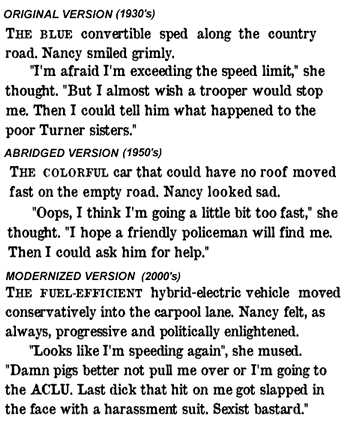

The Nancy Drew Files (1980-2003)
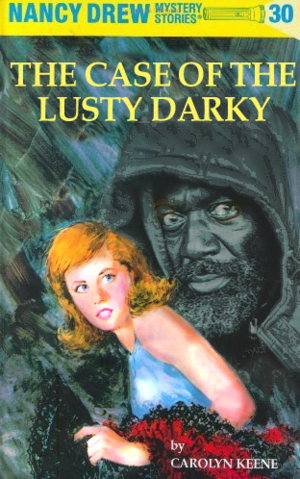
Feminist groups initially praised that, in The Nancy Drew Files, Nancy had cast off centuries of male oppression when the publishers had finally started recognizing the existence of their pulp starlet’s libidinal urges. In the process, the young protagonist dumped possessive boyfriend Ned Nickerson, discovered self-love, and started spending long nights in the Jacuzzi with boys she just met. Those same Feminist groups were soon quick to take issue, however, with the fact that Nancy had begun to employ her feminine wiles much more productively, often enticing potential suspects or informants with the promise of sexual favors, rather than confronting them with evidence she had gathered.
Indeed, in these new books, Nancy was often opting not to gather any evidence at all, with many of the plots involving her just lying on the beach, “dressed in provocative clothing, skirts that showed an irresponsible amount of leg, garish tops that showcased her midriff and breasts, swimsuits whose bottoms did scandalous injustice to the maintenance of the feminine mystique”, whereupon one of the shirtless hunks she often flirted with would alert her to the danger, or flat out confess that he was the perpetrator. Increasingly, Nancy was resolving her “cases” not by sleuthing, but simply by fellating everyone involved. A substantial number of entries ended with the young detective, throat full of clue, wiping her mouth with her hand, reapplying the lipstick she always kept in her purse, and ending with the soon-popular catchphrase “Well, I guess that case is closed!”
While a handful of male readers wrote in with their approval, expressing something to the effect of “Thanks, I can finally read this garbage now”, dozens of tearful letters from grown women who had read the books when they were young that characterized their childhood hero as little more than “a conniving slut for the MTV generation” prompted the publisher to scale back their mass-market efforts by the early 1990’s, eventually transitioning the subject matter of this “next generation Nancy” into more serious waters. According to some critics, this even newer Nancy “replaced the tomboyish sass of the 1930’s version with the paralyzing moralistic fear that was usually the province of born-again Christian televangelists”. In these tracts, Nancy soon lost her long-standing immunity to chloroform, as well as any power to resist that inveterate foe of her peers Frank and Joe Hardy, the dreaded chokehold. Such newfound weaknesses were unfortunate, as the series, in an attempt to educate young girls about the manifold sexual dangers of the world, was increasingly dealing with such themes as rape, murder, and domestic violence.
Spinoffs & Franchise Reboots
Aside from a handful of unauthorized foreign language adaptations, the canonical Nancy Drew series has seen its share of spinoffs and adaptations, none which have been very successful.
- Nancy Drew: Freshman Coed (1973-1987) - an explicit, adult content version that entails the young detective sleeping around as she solves dorm and grounds related crimes such as vandalism and littering, usually as a flimsy excuse for sex scenes.
Dovetailed with a Pay-Per-View companion series of the same name. - N-th Wave Nancy (1980-1993) - Nancy Drew as a twentysomething n-th wave feminist. Few actual mysteries in comparison to the number of times men were tased, maced, or pepper-sprayed. In the latest edition, each chapter is interspersed with passages written by experts analyzing Betty Friedan as well as vouchers for a Rabbit® personal massager and a limited edition print of an original Georgia O' Keefe.
- Girl Detective. (2003-present) - Nancy Drew as a clueless high-schooler who uses a cell phone and drives a sustainably-powered gas-electric hybrid to school when she's not volunteering her time at co-op daycares or ladling out sustenance at community soup kitchens.
- Girl Detective, Jr. (2005-present) - Nancy Drew is a middle-schooler and junior crossing guard who validates parking and checks phony hall passes. She soon discovers that the school's files aren't what they seem. But is she a good enough sleuth to expose the Principal?
- Nanciadora Esperanza Concepción Drusillo: Misterios Desde La Frontiera (1995-present) - authorized Spanish language remake of the original mysteries, as set in the culturally rich Mexican province of Quintana Roo.
"¿Tiene Nanciadora la inteligencia para ser buena chica, y mantenerse alejado?"
Adaptations In Other Media
Film
Aside from the aforementioned pay-per-view series which heavily featured Nancy's trademark magnifying glass in an unconventional role, the character Nancy Drew has appeared in a handful of films. Of these, four of these were made in the 1930's, and all but one lost money.
The first four films starred Bonita Granville, a famous but now largely forgotten actress and were more or less faithful adaptations. Their only significant contribution was the creation of an Official Nancy Drew Fan Club as well as the subtraction of a few bothersome details.
The most recent movie adaptation, which did much more to further merchandise and poster sales, simply titled Nancy Drew takes the girl detective to Los Angeles, where her father just wants her to be normal. Somewhat anticlimactically, she complies, and begins to assume the activities typical of a normal teenage girl, the only telling sign of her past life in the Midwest being the magnifying glass and plaid skirt she wears all the time like a security blanket. Fan reaction was somewhat mixed, ranging from "OMG! I shop at Hot Topic and Vickie's too!" to "You know, this really should have been a direct-to-dvd release like that trash that the Olson Sisters used to put out." Critics often cite the "complete lack of a plot" and "its unabashed replacement with a mall romp" as the film's chief disappointment.
Computer And Video Games
| “ | Many books have spawned movies, and many video games have spawned movies, so it was a natural step for the current rights holders of Nancy Drew to bring the crime stopping supergirl to the big CRT screen. Since 1998, SHE Software, a division of Womyn EntHERtainment, has been producing a series of exciting personal computer games by leveraging the graphics technology of the late 1980's to empower girls everywhere to solve mysteries just like Nancy! | ” |
— Excerpt from a Promotional Foldout
| ||
Nancy Drew is also the subject of a series of point and click adventure games, in the style of such venerable PC games as Return to Zork and Myst. Unlike Return To Zork, however, they aren't so poorly made it's funny, and eminently unlike Myst, the puzzles are straightforward and easily solvable. Usually they consist of a light adaptation of an original Nancy Drew mystery, but seamlessly applied to a modern timeframe, narrated expertly by Fallout-style talking heads, and then meticulously flattened into 16bit palette VGA-like colors.
| “ | Instead of the gruesome deaths that await you in other, brutish, male-oriented games, Nancy Drew games give you such features as "Help" and "Second Chance". And you'll need them. Because rather than simply finding passcodes and slips of paper with the word "clue" on them all the time, there are an exciting number of ways to solve the mystery! In The Secret of Generic Southwestern Ranch (2004), for instance, you'll first have to pull your weight on the ranch before you can sit down beside the campfire! Help by saddling up to such riveting unisex activities as picking vegetables, picking flowers, collecting eggs, arranging beads, or baking a cake! But watch out! If you pick that tomato before it's ripe, you're going to have some 'splaining to do! Leave the saddle on that horse and you might get sent home! But don't worry: your cell phone's with you, your male friends are always on speed-dial, and you're a strong, independent woman! |
” |
See Also
Other Books By Dunnit & Grosslap
"THE HARDY BOYS" - #11 ($4.95)
Alternate titles for this installment once included EXCITEMENT IS OUR MEAT!, BOUND AND GAGGED, JUST THE WAY THEY LIKE IT, THE PROBLEM OF THE PAEDO, and THE NICE OLD MAN'S SECRET ROOM.
Order "THE HARDY BOYS" - BOOK # 11: "The Pedophile in the Passage" from our back catalog today! Cash or money order only.
Postage and handling charges apply. $2.00 for one book and 50¢ for every book thereafter.
PLEASE send me the following Stratemeyer Collection™ titles and BILL ME PROMPTLY for the amount indicated below.

